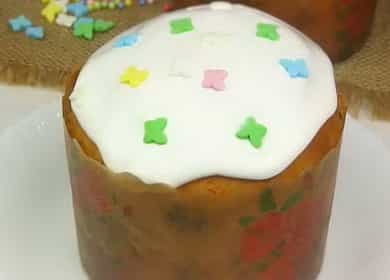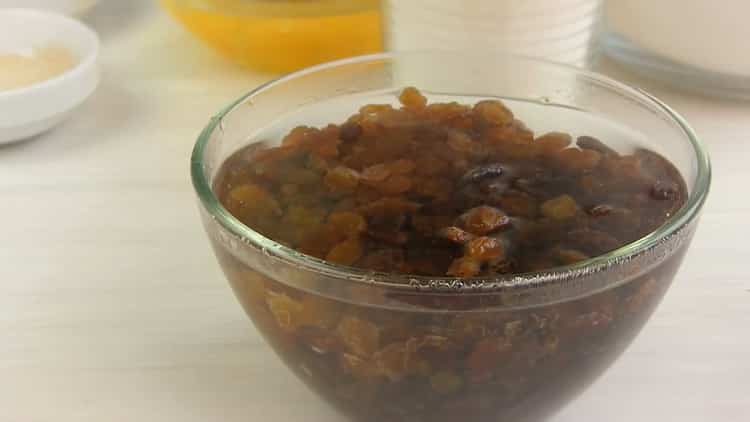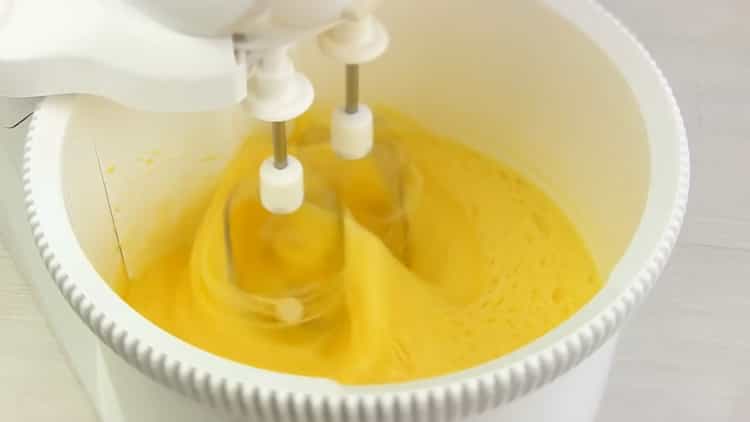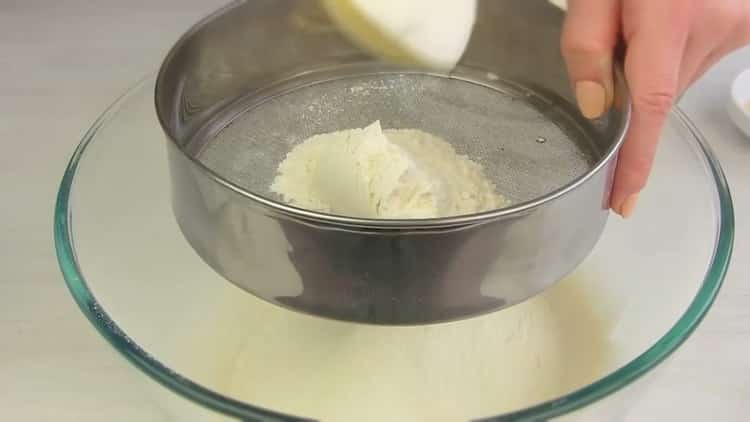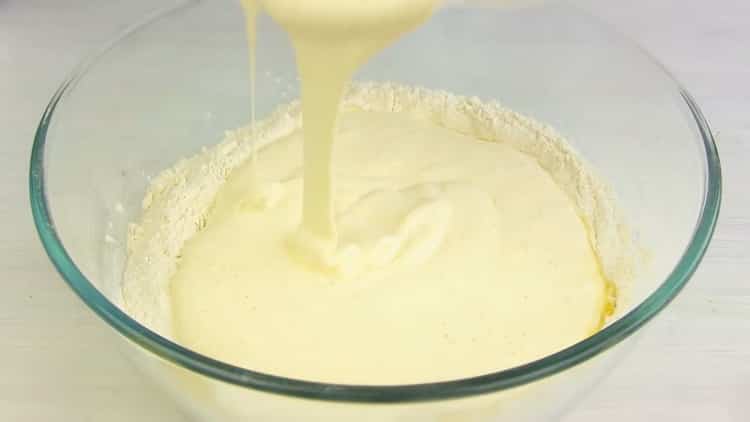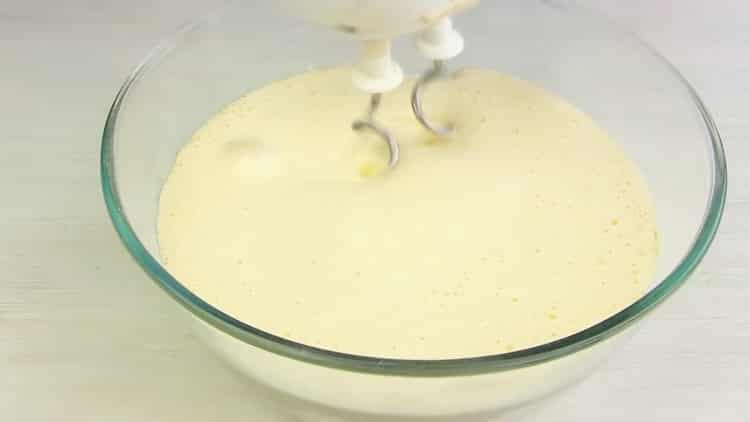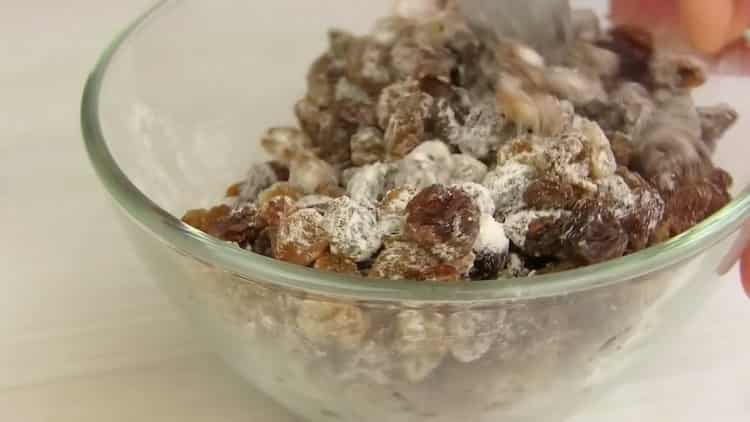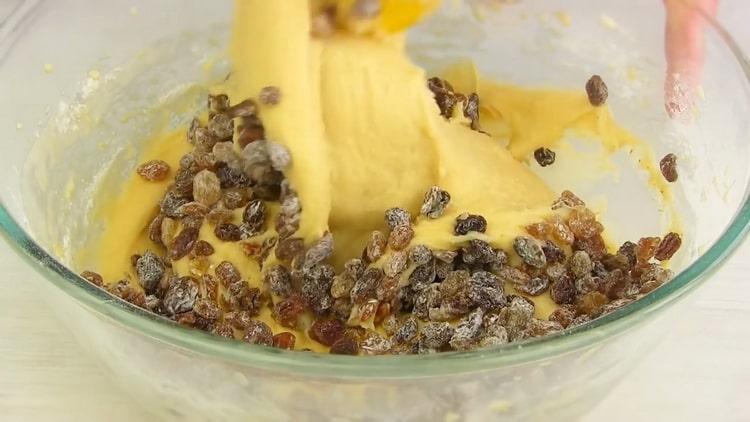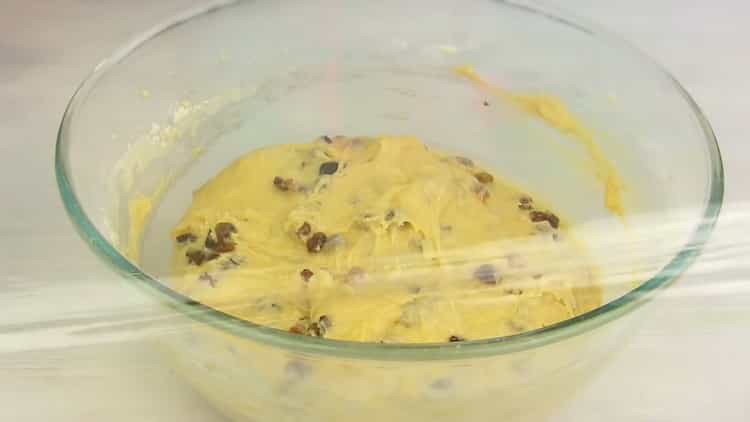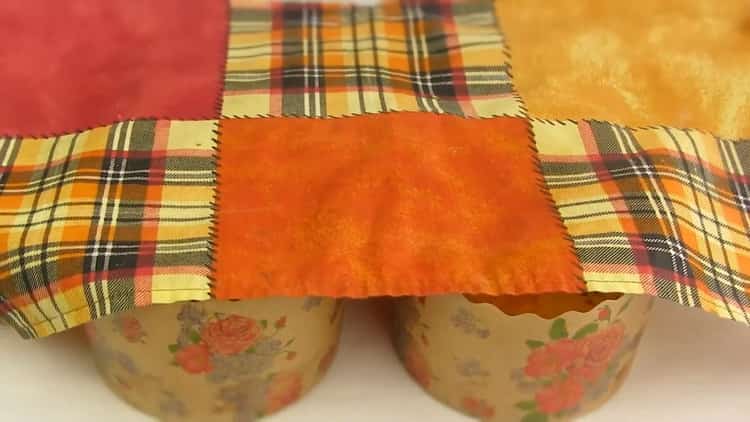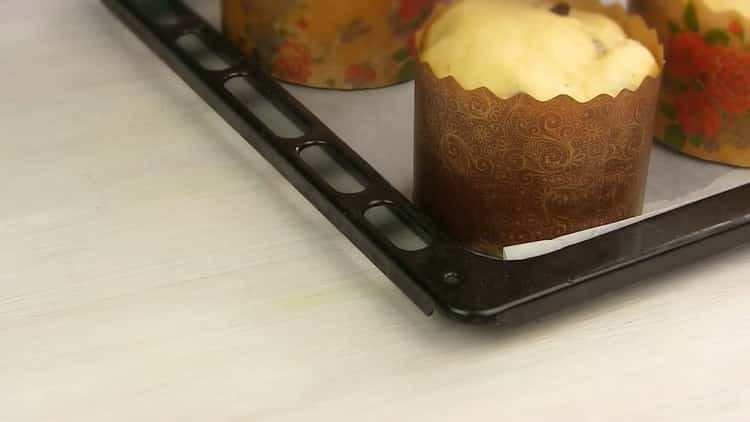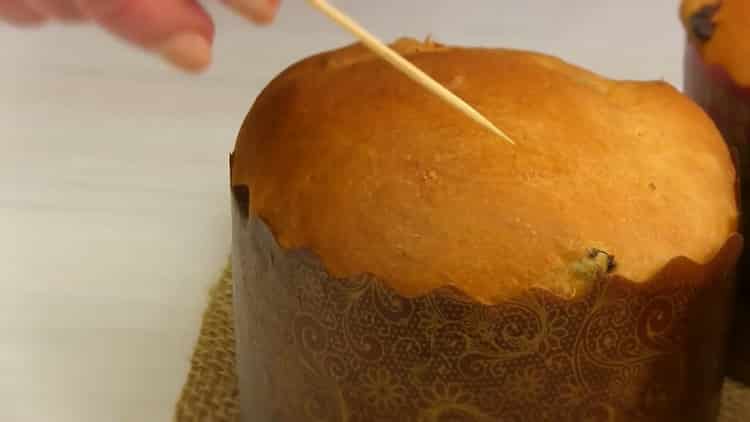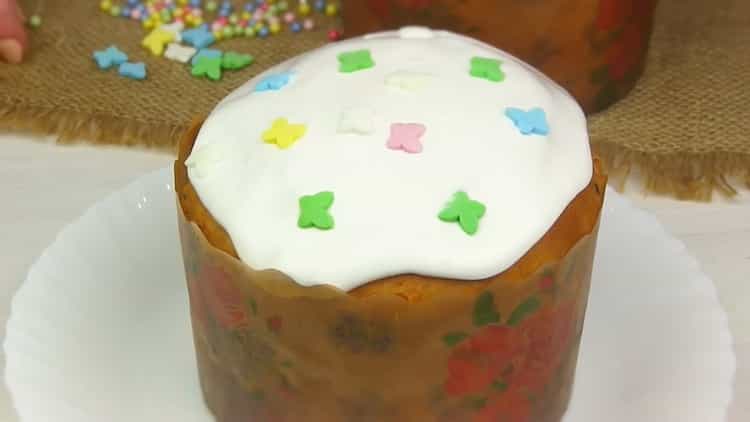Kitchen appliances and utensils:
- oven;
- mixer (+ nozzles for cream and for dough);
- teapot;
- microwave (or stove and saucepan for melting butter and heating cream);
- several deep and medium bowls (for dough and whipping with a mixer);
- molds for Easter cakes (3 pcs. 14 cm each, but this is optional, you can take any);
- wooden or silicone spatula;
- glass;
- a baking sheet;
- towel (paper or fabric).
Ingredients
According to the recipe, quite simple products are included in the “lazy” Easter cake, so every housewife will get it!
| Flour | 600 g |
| Egg | 4 things. |
| Cream 20% (or very fat milk) | 200 ml |
| Butter | 200 g |
| Sugar | 200-250 g |
| Dry, fast-acting yeast | 14 g |
| Vanilla Sugar (or Vanillin) | 2 pack (or 1 g of vanillin) |
| Raisins | 220-250 g |
| Boiling water | for raisins |
Step cooking
- The first thing we cook is raisins. We wash it well and put it in a bowl. Boil a kettle with drinking water. Pour the raisins so that the water completely covers it. Leave it to swell for 10-15 minutes. Drain the water (from raisins) and put the raisins on a towel (or a paper towel) so that it is completely stacked and dried up. For this purpose, over time, you can transfer the raisins to a new towel.

- If you have a mixer with a bowl - fine, if not, then take any deep container (do not take enameled dishes - whisks can ruin it). Deep plastic bowls are great. Drive four eggs into a bowl / bowl and begin to beat them little by little. As the eggs are beaten, we begin to gradually add sugar. 200-250 g do not fall asleep once, stretch this process for five minutes. So we will achieve the dissolution of sugar and thick foam in the end.

- When the sugar is already completely filled, add vanilla sugar - two whole bags (this is 20 g). Now beat the mixture for about 10 minutes. The result is a beautiful magnificent white mass. Sift all 600 g of flour into a large bowl. Of the total mass, we set aside 1 tsp. flour (we need it for raisins). Add 14 g of dry fast-acting yeast and mix with flour.

- Melt 200 g of butter either in the microwave or on the stove. Do not forget to stir to heat evenly. When the oil has completely melted, leave it to cool to room temperature. In a microwave we put a glass of cream of 20% fat and heat for half a minute, mix and heat again for half a minute. Cream should be warm, but not hot. Therefore, focus on your technique. You can heat the cream on the stove in a saucepan. Take a bowl of flour and yeast. In the flour we make a deepening and pour the cream first, and then the melted and cooled oil.

- Pour beaten eggs with sugar there. We put nozzles for the dough onto the mixer (these are those that are like a spiral) and start kneading the dough. This process should occur at a low speed. Finish when all the flour is put into the dough. The dough will be yellowish, thick, stretching, but, of course, you will not pick it up in your hands - it will stick.

- We collect raisins in a bowl and sprinkle 1 tsp. flour. Mix.

- Add raisins to the dough, and now for the last time we mix it with a wooden (silicone) spatula.

- Cover with cling film and leave in a warm place for 2-3 hours, so that the dough fits well.After the appointed time, remove the film, and crumble the dough with a spatula.

- Now you need to put the dough into forms. You can take any forms for Easter. We spread on 1/3 of the volume of the mold, as the dough is still suitable.

- Cover with a towel for 20-30 minutes so that the dough rises again. Turn on the oven at 180 ° C.

- After the dough has risen, we send the forms to the oven for 50 minutes (we check the readiness of the dough with a wooden skewer, nothing should stick to it).

- If the middle is not ready yet, and the top is already lightly browned, then we moisten the top with water and cover with parchment paper.

- Cool the cakes and decorate them to your liking. Enjoy your meal!

Video recipe
If you still doubt that a real Easter cake will follow this recipe, see the video recipe below. All your doubts will be dispelled! Enjoy both the cooking process and the view of the beautiful pastries, from which the "drooling". Enjoy your viewing!
You now know that the process of preparing an Easter cake does not require a mandatory batch, you can stay with clean hands. This recipe is suitable for everyone who does not like to knead the dough, or who usually does not succeed. Minimum energy consumption, maximum result. The cake is not dry, soft, porous and tender. Be sure to take a note of the recipe!
